Monolith M1570

A big pair of open-backed, planar magnetic headphones with a warm tint to their presentation, their size and weight may put some off and they’ll require high-end kit to extract the best performance from them.
Pros
- Warm, energetic presentation
- Comfortable to wear
Cons
- Heavy and big in size
- Doesn’t come with Balanced XLR cable
- More expensive than M1070 model but similar spec
Availability
- UKRRP: £527.99
Key Features
- DesignOpen-backed design for a wider soundstage
- Replaceable earpadsEarpads can be removed and replaced with new ones
- CablesShips with mini-XLR to 3.5mm connector cable
Introduction
The Monolith M1570 are the second pair of open-backed headphones I’ve tested from Monoprice, and looking at them side-by-side, you’d be hard pressed to tell the difference between them.
Both are pitched as headphones for professional use and critical listening, they look near identical, and their specification is virtually the same. The main difference is the asking price, with the M1570 more expensive by over £100.
And that begs the most obvious of questions – is whatever performance the M1570 offers worth the jump in price?
Design
- Even heavier than M1070 model
- Not the best ergonomics for smaller heads
- Balanced XLR cable connectors
I could pretty much rinse and repeat the words I wrote for the M1070 because both it and the M1570 headphones are virtually identical in appearance and construction, the only aesthetic difference is that the membrane for the open-backed portion of the earcup takes on a different appearance, and that the M1570 uses a different connector for the cable.
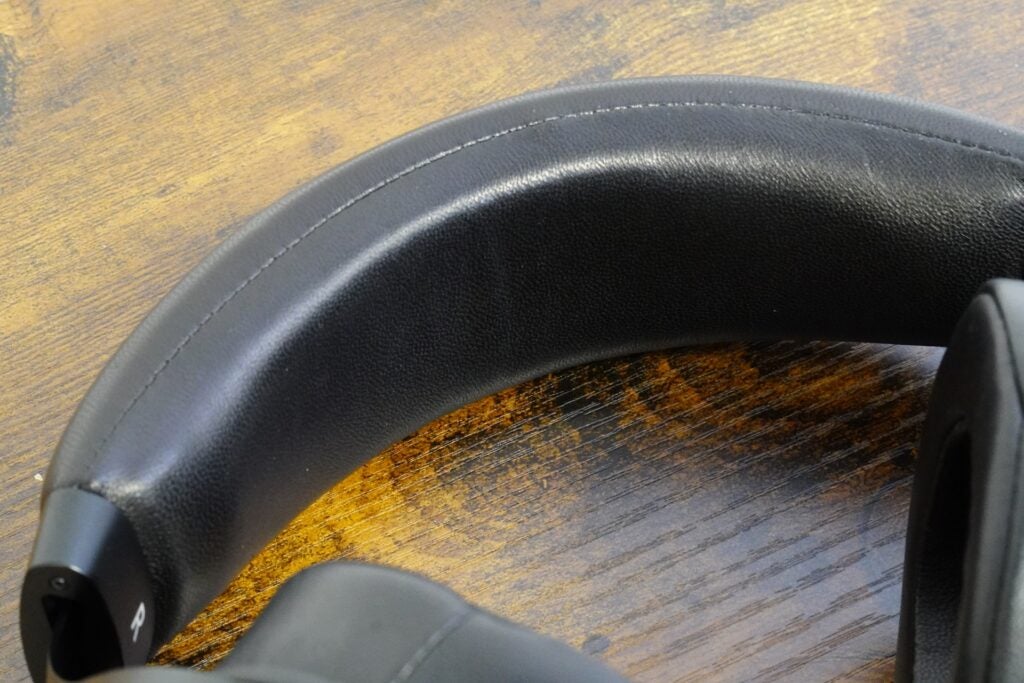
The M1570 are big, burly and even heavier than the M1070 at 700g compared to 580g. I can feel their heft and notice their presence when worn but like the other pair, they’re not what I’d describe as discomforting to wear. The earpads are enormous but the contact surface around the ear is about as plush as you can get, and the headband’s width disperses the weight on top of the head. That said, smaller heads will feel swamped putting these headphones on.
Craftmanship is solid and though there doesn’t appear to be any info on the materials used, I suspect lightweight but durable metals for the frame and hinges combined with some plastic here and there. It’s a simple design but there’s so much of it. They’re also only available in black, marking them out as a pair of headphones that Batman would wear.
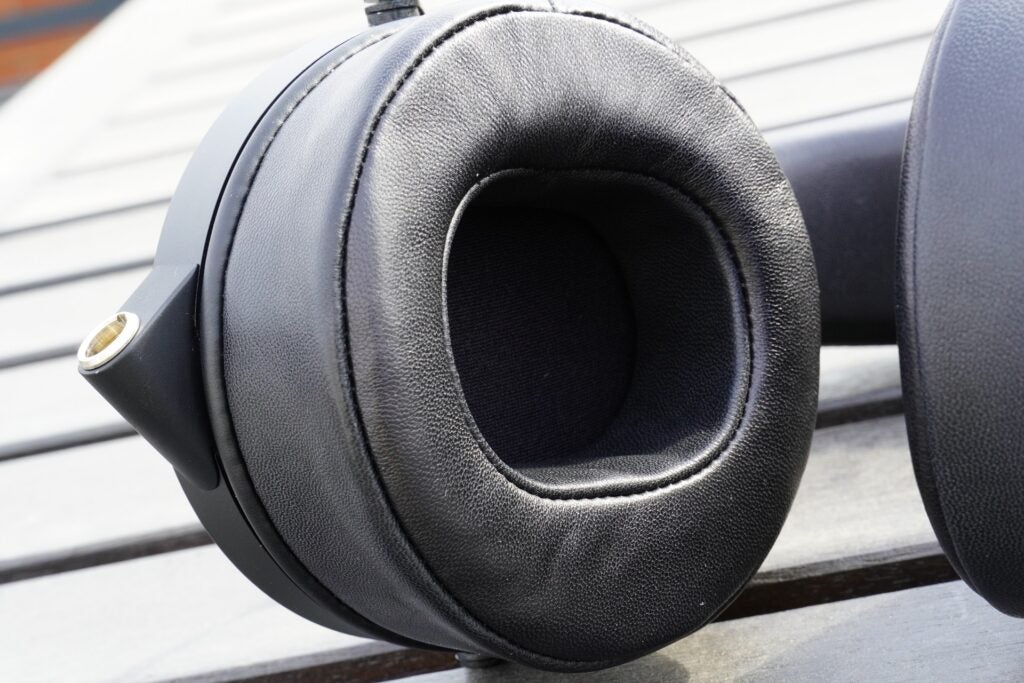
The earpads can be replaced and there are some velour pads enclosed in the gigantic carry box, which makes a mockery of the word portable. Rather than use a 3.5mm jack, the Monolith use a mini-XLR pin out and the review sample I had came with two balanced cables: one that terminates in a 6.3mm connection (a 3.5mm adapter is provided) and another that terminates in a four-pin XLR connector.
Don’t count on that being the case if you do buy these headphones, as the four-pin XLR cable out is only available separately on Monoprice’s site and the imported version sells for £109 on Amazon UK, which adds a hefty chunk on top. XLR is generally considered to output higher-quality sound than 3.5mm but that does depend on the device you’re connecting to.
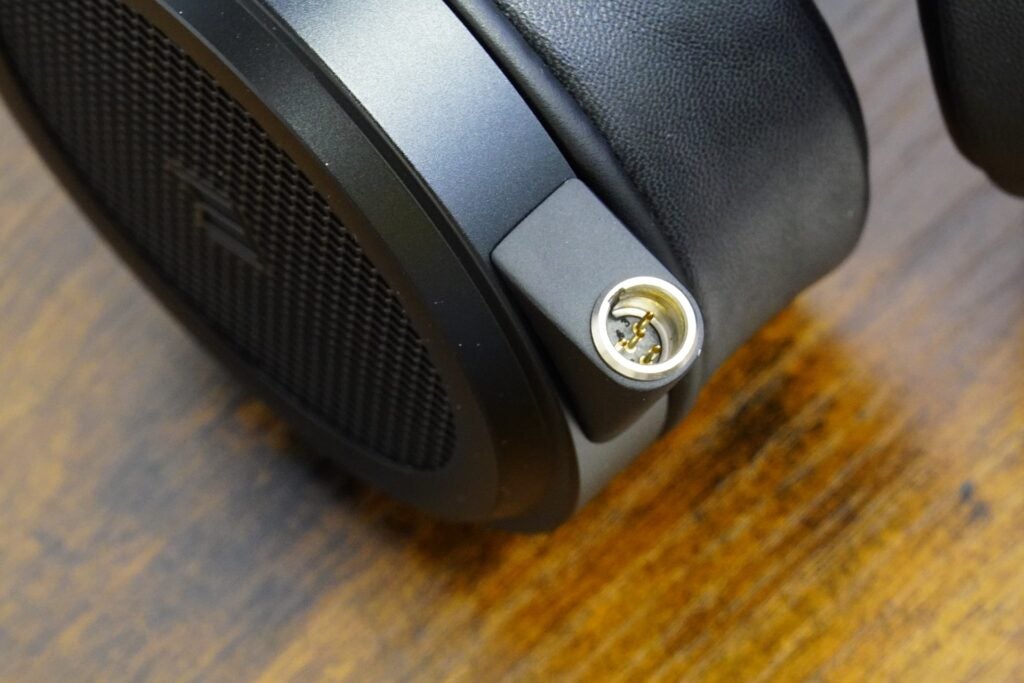
Features
- Large 106mm drivers
- Wide frequency range support
- Low distortion
Aside from the XLR cables, the M1570 match the M1070 in pretty much every way on the spec sheet. Impedance is 60ohms, indicating a DAC/headphone amplifier ought to be considered to draw out their best performance. Large 106mm planar magnetic drivers are used for the audio, which should create a larger, expansive soundstage.
Sensitivity is 96dB, which is around the middle end of the spectrum and not as loud as the Austrian Audio Hi-X65 can manage, by comparison. There is mention of a maximal SPL of 130dB just to confuse matters, which is the highest sound pressure level the headphones can reach before distortion creeps in. THD (Total Harmonic Distortion) is rated at less than 0.1% @100dB to indicate that signal noise is minimal.
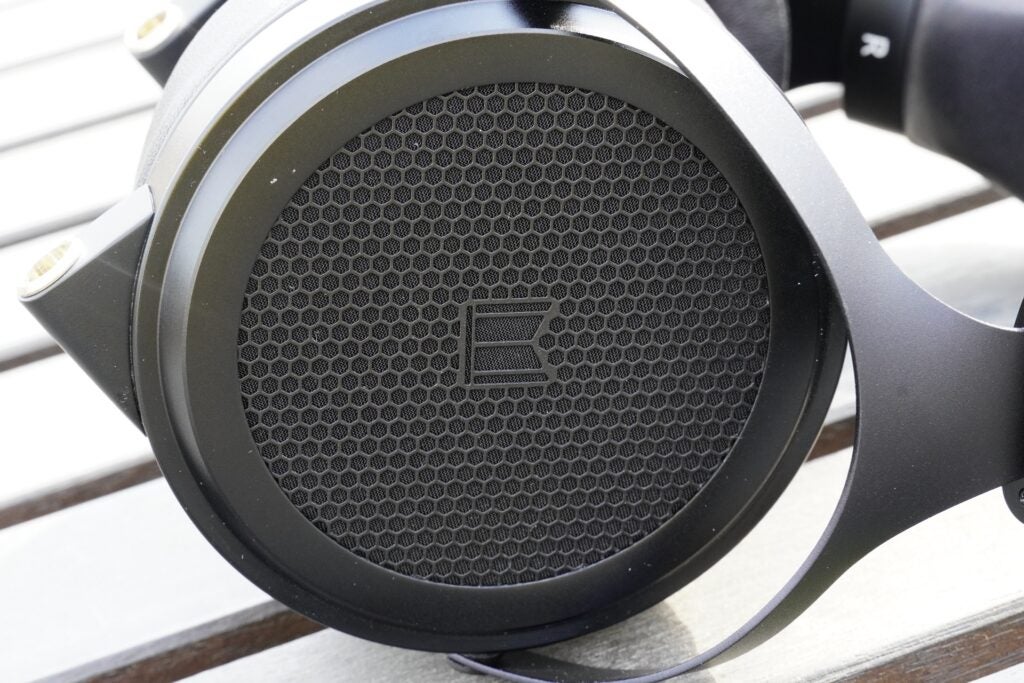
The frequency response is an ambitious 5Hz to 50kHz. The human range of hearing doesn’t cover that wide a frequency range, so you may be able feel rather than hear notes below or above 20Hz – 20kHz, but you’ll need some high-end kit and high-quality audio sources for that to happen. I wouldn’t suggest getting these headphones if you’re not au fait with the nuts and bolts of amplification boosts and EQ settings.
Sound Quality
- Warmer tone than M1070
- Energetic approach to music
Give how similar the Monolith is to the M1070 in design and features, the expectation – at least for me – is that sound quality will be the deciding factor between the two. There is a difference between them but a slight one, and in the end, I prefer listening to the M1070.
With both headphones connected to a Chord Mojo 2 DAC, the soundstage is described in similar scope and the more I listen, the harder I find to tell much of a difference between the M1070 and M1570’s overall performance.

There’s a slightly warmer and richer tone to the M1570 with some more punch and thrust to low frequencies that makes it the more energetic of the two. Bass has more weight when listening to the main title theme of the Apple TV+ show Foundation but the M1070’s clearer and sharper high frequency performance etches out more detail within the track that’s not as acutely revealed by the M1570.
A listen to the Corelia Chase from the Solo soundtrack (192kHz) and again there’s more thrust to the orchestral section but detail is slightly less clear. With voices, such as that of John Legend in Let’s Get Lifted or Natalie Imbruglia’s in Torn and the M1570 elicits a slightly warmer tone that gives them a slightly larger presence in the soundstage.
Compared to the similarly priced Sivga SV023 the Monolith is the weightier sounding of the two in describing instruments and voices whereas the Sivga is lighter and more delicate in its approach. But the Sivga showcases a better stereo image and depth and carries forth more dynamism in the way it reproduces voices. The Sivga does require more assistance from a DAC/headphone amplification with its 600ohm rating, but with the right kit it’s the more engaging and dynamic listen.
The M1570 is a good listen but I’d say the M1070 offers a crisper high frequency response and elicits slightly better separation of elements within the soundstage, where the M1570 sounds ever so slightly muddier by comparison. That does seem to be the byword for the M1570 – it’s slightly different but not leaps and bounds better than its sibling.

I suspect with higher-end kit with XLR inputs, the M1570 will pump out a more convincing performance than the M1070 and in that context it may be worth the jump in price. But if you’re mainly interested in wired headphones paired with a headphone amplifier, I’d be inclined to say there are better options out there at less expense.
Latest deals
Should you buy it?
If you have hi-fi kit with an XLR input: These headphones are geared to hi-fi enthusiasts with the kit to take advantage of the XLR cables. If that’s you, then the warm, open presentation will likely have greater impact than paired with a laptop/DAC combo.
If your head is on the smaller side: Like the M1070, the ergonomics of these headphones aren’t best suited for those with a smaller head. While comfortable to wear, some will find the size and weight of these cans distracting.
Final Thoughts
A pair of open-backed headphones to listen to that feature a slightly warm presentation, but to get the best from the Monolith M1570 it’s more than likely you’d need to par them with higher-end hi-fi equipment/amplification or software to give them a boost.
Their size and weight may also make them inconvenient for some but despite their largesse, they’re a surprisingly comfortable pair to wear.
If you’re shopping for a pair of headphones to partner with a DAC or headphone amplifier, there are less expensive pairs to choose from, and that the M1570 don’t come with the balanced XLR cable – a purchase of which only adds to the cost – makes them less than convenient. They have come down in price in recent months, which might ease the pain of getting the cable.
How we test
We test every headphone we review thoroughly over an extended period of time. We use industry-standard tests to compare features properly. We’ll always tell you what we find. We never, ever, accept money to review a product.
Find out more about how we test in our ethics policy.
Tested across a month
Compared to similarly priced headphones
FAQs
The M1570 comes with a mini-XLR cable that terminates in a 6.3mm connector (with a 3.5mm adapter) but it does not come with a balanced XLR cable. That is only available to purchase separately.
Full specs
Sustainability
Trusted Reviews’ holds the fact that global warming is not a myth as a core value and will continuously endeavour to help protect our planet from harm in its business practices.
As part of this mission, whenever we review a product we send the company a series of questions to help us gauge and make transparent the impact the device has on the environment.
We currently haven’t received answers to the questions on this product, but will update this page the moment we do. You can see a detailed breakdown of the questions we ask and why in our sustainability info page.
The post Monolith M1570 appeared first on Trusted Reviews.
https://ift.tt/kOylEmR





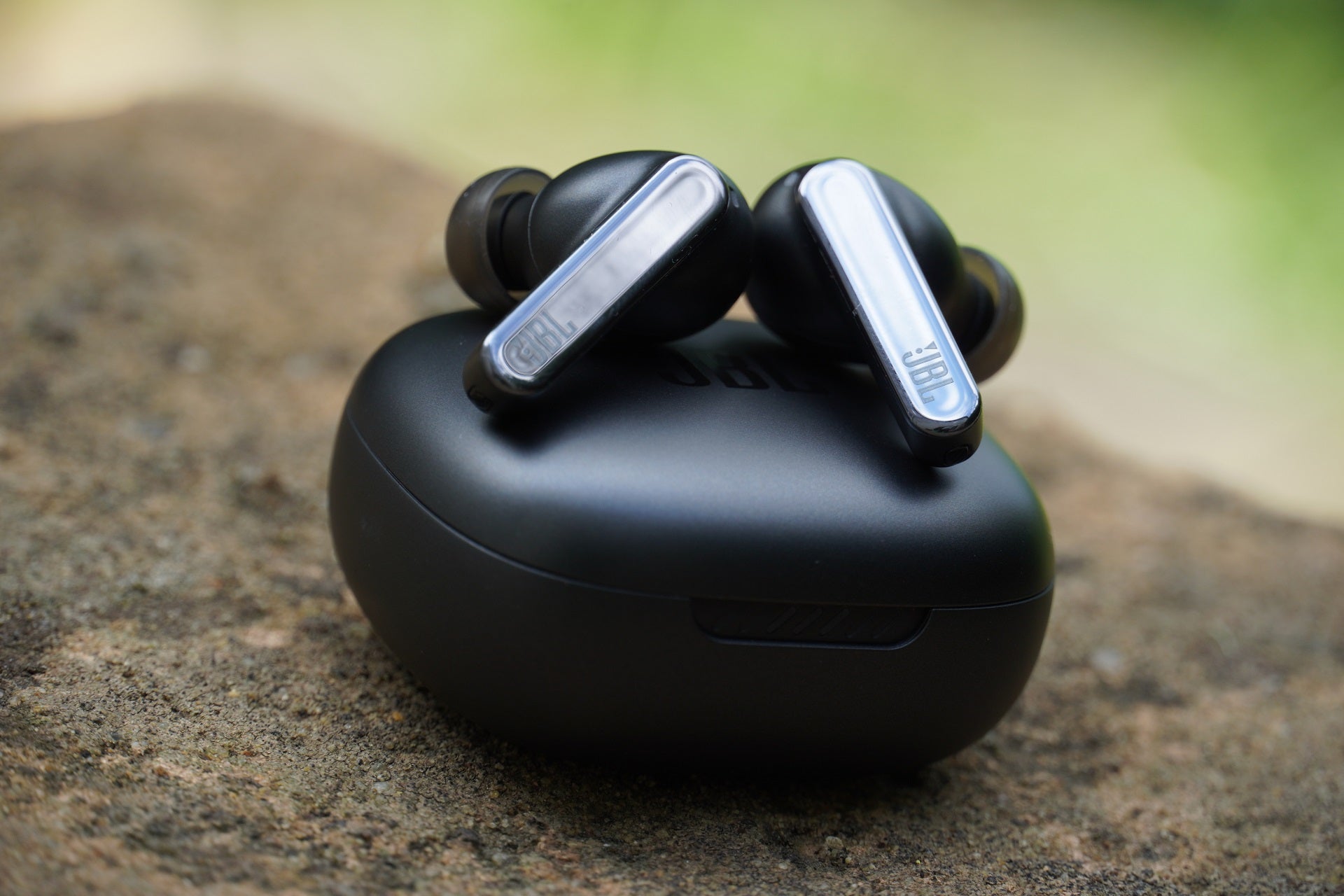
Comments
Post a Comment